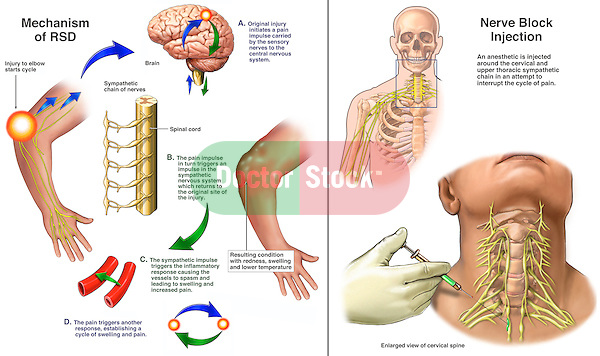
Cervical dystonia is a neurological disorder that causes involuntary contraction or tension of the cervical muscles
This condition is usually characterized by a tingling sensation in the neck. In cervical dystrophies, the muscles of the neck contract involuntarily in response to stress or anxiety. When these contracts continue, they can cause misalignment of the neck and head. Stiffness can cause jerky head movements, and the severity of the condition also ranges from mild to severe. If left untreated, cervical dystrophies can lead to serious neck injuries, paralysis, and even death.
Cervical dystrophy occurs when muscle fibers lose flexibility and elasticity. When the fibers begin to strain due to constant stretching, they become stiff and stiff, and the result is cervicogenic muscle tension. This causes the muscles in the cervical region to contract or relax. The result is discomfort and stiffness in the cervical spine.
Cervical dystrophies can affect both men and women. Symptoms vary depending on the level of the disease, but all patients with some discomfort should seek treatment. If left untreated, cervical dystrophy can lead to serious complications.
Cervical dystrophy or cervical tumors is a condition that causes the production of myelin. When myelin is overproduced, it causes narrowing of the nerve pathways. This causes problems with the central nervous system. Symptoms of this condition include decreased sensitivity to light, difficulty swallowing, and loss of bladder control. In most cases, the condition is not life threatening and responds well to treatment.
Spinal Cord Injury is a condition wherein the cord or spinal cord is severely damaged or cut due to some accident or trauma. This may result to a permanent disability of the patient. If left untreated cervical spinal cord injury can result to progressive degenerative changes of the nerves and tissues of the nervous system, including the spinal cord, causing weakness and numbness of extremities. In addition, the condition may result to the deterioration of motor skills and may impair posture. As the condition progresses, more symptoms such as difficulty breathing, swallowing, speech and walking may develop. Eventually, cervical cord injuries result to complete paralysis.

Cervical dysmorphic syndromes is a neurological condition that affects the person's tendency to feel pain on one or both sides of the body. There are two types of this condition, called primary and secondary. In primary, the pain develops after an underlying medical condition is present. In secondary, pain starts after the diagnosis is made or before it is treated. For patients with secondary cervical dysmorphic syndromes, symptoms may occur on one or both sides of the body. It may involve both the upper and lower limbs.
Cervical dystrophies are extremely painful conditions. They can be caused by a variety of factors, but if left untreated, may lead to a devastating outcome. Early detection and appropriate treatment can help improve the quality of life of women and men with this condition.
Symptoms may include difficulty breathing, nausea, sweating, dizziness and pain in various parts of the body. Treatment options include surgery and therapy. Surgery can address the condition at its source. In some cases, drugs such as beta blockers or antidepressants are given to ease the symptoms and slow down the development of the disease.
Medications that help manage the symptoms are also administered, such as medications for asthma and depression, medications for muscle spasms and muscle relaxation, and physical therapy. There are several types of treatment that are being used today. To alleviate the symptoms, acupuncture, laser surgery, physical therapy and magnetic stimulation are used. and may be combined with surgeries to improve the function of the nervous system. Therapy may also be used to improve balance and coordination, enhance the immune system and help with pain management.
Cervical dystrophy can result in progressive and irreversible damage to the nervous system. Fortunately, treatment options are available to help minimize or even stop the progression of the condition. When diagnosed early and managed properly, it can lead to a normal life.
For people who are diagnosed with chronic conditions, there are many resources available to help you manage and control your symptoms and to avoid complications or death. There are many ways to prevent this from happening to you and your loved ones.